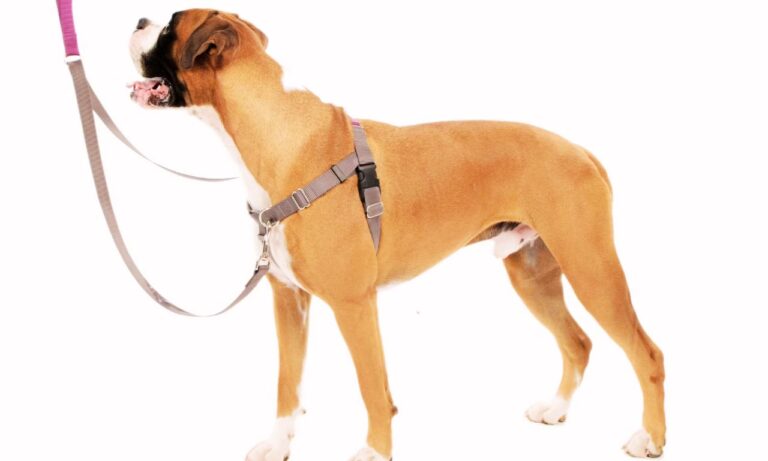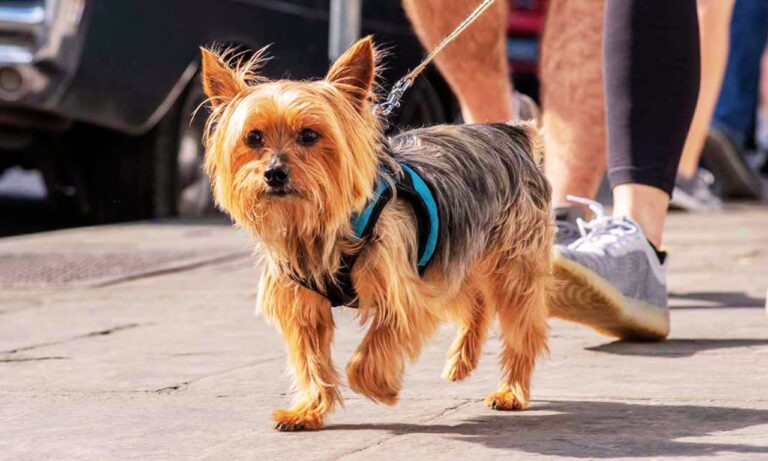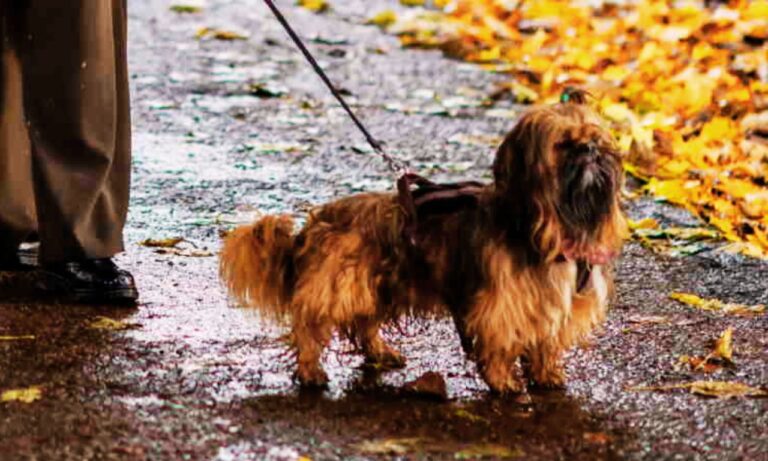The Anatolian Shepherd is a majestic and formidable breed known for its protective nature and strength. However, one of its most defining characteristics is its coat, which plays a crucial role in the dog’s ability to perform its traditional role as a livestock guardian. So, what kind of coat does an Anatolian Shepherd have? Discover the benefits of using a harness by reading this guide on should a Collie wear a harness.
I will explore the characteristics of the Anatolian Shepherd’s coat, its unique features, and the importance of proper grooming and care. I’ll also delve into specific numeric data and facts to help you understand what makes this breed’s coat so special.
Blog Highlights
ToggleOverview of the Anatolian Shepherd Coat
The Anatolian Shepherd has a double-layered coat that provides insulation and protection from the elements. The coat is specifically adapted for extreme weather conditions, allowing these dogs to guard livestock effectively regardless of the climate. Here’s a closer look at the key features of the coat:
What Kind of Coat Does an Anatolian Shepherd Have?
So, what kind of coat does an Anatolian Shepherd have? The Anatolian Shepherd’s coat consists of two layers: a dense undercoat and a coarser topcoat. This double-layered structure serves two main purposes:
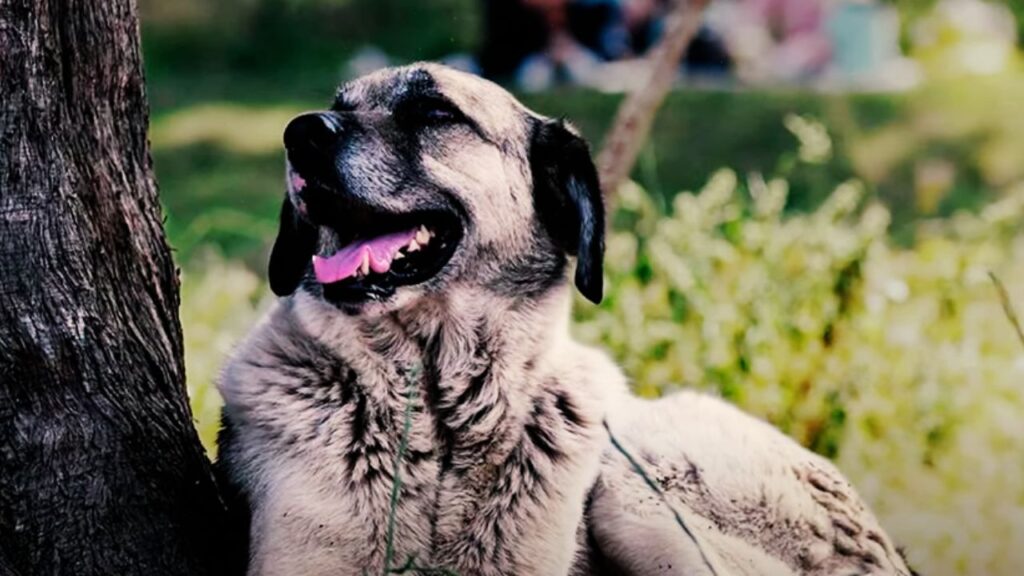
- Undercoat: The undercoat is dense and soft, functioning as an insulating layer. This helps the dog retain heat during the cold winter months and provides a barrier against the summer heat. The undercoat thickness varies throughout the year, depending on seasonal changes. During shedding periods, an Anatolian Shepherd can lose up to 40% of its undercoat to adjust to the weather.
- Topcoat: The topcoat is longer, coarser, and serves as a protective layer against external factors, such as moisture, dirt, and pests. It also helps guard the dog against UV rays and prevents skin irritation from thorny vegetation when working in rough terrain.
Coat Length and Texture
The length and texture of the Anatolian Shepherd’s coat can vary depending on the specific lineage of the dog. There are two main coat types found in Anatolian Shepherds: short and rough.

1. Short Coat
- Length: The short coat measures approximately 1 to 2 inches (2.5 to 5 cm) in length, lying close to the body.
- Texture: The short coat is smooth and lies flat, providing an aerodynamic and low-maintenance option.
- Features: This coat type is more common in Anatolian Shepherds working in warmer climates, as it allows for better heat dissipation while still offering some protection against the sun and pests.

2. Rough Coat
- Length: The rough coat is typically longer, measuring 3 to 4 inches (7.5 to 10 cm) or more.
- Texture: The rough coat is coarser and denser than the short coat, providing enhanced protection against cold weather and harsh conditions.
- Features: This coat type is often seen in Anatolian Shepherds working in cooler or more mountainous regions, where added insulation is crucial for their comfort and health.
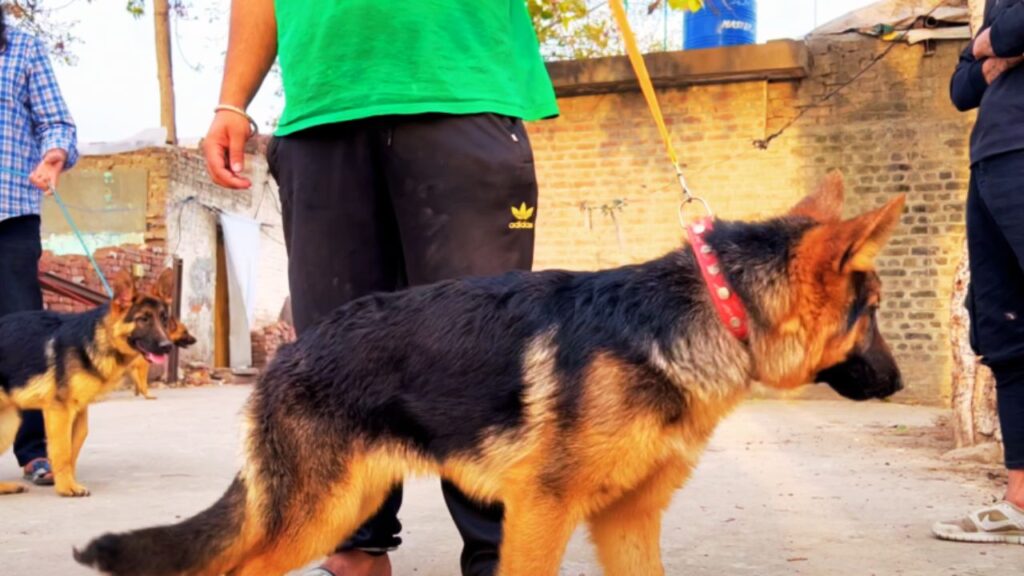
Seasonal Shedding: What to Expect
The Anatolian Shepherd is known for its heavy shedding, which generally occurs twice a year. This shedding cycle is referred to as “blowing the coat” and is common in double-coated breeds.
- Spring Shedding: In preparation for warmer weather, Anatolian Shepherds will shed a large portion of their dense undercoat in the spring. During this time, they may shed up to 50% of their fur over a few weeks.
- Fall Shedding: As temperatures drop, the dog will shed its lighter summer coat to make way for a thicker undercoat, providing the insulation needed for winter.
Coat Color Variations
The coat of an Anatolian Shepherd comes in a variety of colors, each with its own unique charm. Some of the most common color variations include:

- Fawn: This is the most typical coat color for Anatolian Shepherds. It ranges from light cream to deep golden shades, often accompanied by a black mask on the face.
- Brindle: A brindle coat has a base color of fawn with streaks or stripes of a darker color, giving the dog a striking appearance. Brindle patterns can vary widely in their intensity and arrangement.
- White: White-coated Anatolian Shepherds are less common but still recognized. These dogs may have lighter pigmentation around their eyes and nose.
- Pinto: Pinto coats feature large patches of color, typically fawn, on a white background, giving a distinctive and attractive look.
The coat color of an Anatolian Shepherd does not affect its working ability, but some colors may be more suited to specific environments. For example, a fawn coat with a black mask can help the dog blend in with livestock, providing better camouflage against predators. For insights on whether Airedales are good off-leash, explore this comprehensive article.
Importance of Coat for Working Roles
The coat of an Anatolian Shepherd is more than just a physical trait; it plays an essential role in helping the dog perform its duties as a livestock guardian. Below are some of the key ways in which the coat contributes to the dog’s effectiveness:
1. Weather Protection
- Cold Weather: The dense undercoat provides excellent insulation, allowing Anatolian Shepherds to thrive in cold climates. Even in temperatures as low as -20°F (-29°C), this breed can comfortably guard livestock without the need for additional shelter.
- Heat Resistance: Despite being well-suited for cold weather, the coat also provides protection from the sun and helps prevent overheating. By shedding the undercoat during warmer months, the dog remains cooler while still being shielded from direct sunlight.
2. Physical Protection
The coarse topcoat protects the dog from physical threats such as thorny bushes, rough terrain, and insect bites. This is especially important for Anatolian Shepherds that work in regions with dense vegetation or a high presence of pests.
3. Camouflage
The coat colors of Anatolian Shepherds can provide natural camouflage, making them less visible to potential predators. This is particularly useful when working in areas with large livestock herds, as the dog can blend in and remain unnoticed while watching for intruders. For guidance on choosing the right collar size for an Airedale puppy, check out this detailed guide.
Grooming and Maintenance of the Coat
Proper grooming is vital for maintaining the health and appearance of an Anatolian Shepherd’s coat. Due to their size and heavy shedding, regular grooming is essential. Here are some important grooming considerations:
1. Brushing
- Frequency: During shedding seasons (spring and fall), it is recommended to brush an Anatolian Shepherd at least 3 to 4 times a week to remove loose hair and prevent matting. Outside of shedding periods, weekly brushing is usually sufficient.
- Tools: A slicker brush and an undercoat rake are ideal for grooming this breed. The slicker brush helps to remove loose fur from the topcoat, while the undercoat rake reaches the dense undercoat to remove excess fur.
2. Bathing
- Frequency: Bathing an Anatolian Shepherd should be done only as needed, usually every 2 to 3 months. Over-bathing can strip the natural oils from the coat, leading to dry skin and coat issues.
- Tips: Use a gentle, dog-specific shampoo to avoid skin irritation, and ensure that the coat is completely dried after bathing to prevent moisture buildup in the dense undercoat.
3. Dealing with Shedding
- Vacuuming: During heavy shedding periods, be prepared to vacuum regularly, as loose fur will accumulate around your home.
- Diet: A healthy diet rich in omega-3 and omega-6 fatty acids can help reduce shedding and keep the coat shiny and healthy. Including foods like fish oil or supplements can make a noticeable difference.
Common Coat Issues and How to Address Them
Despite being relatively low-maintenance compared to some breeds, Anatolian Shepherds can experience coat-related issues that require attention. Check out the best dog collars for Border Collie to find durable, stylish, and comfortable options for your active dog.
1. Matting
Matting occurs when the undercoat becomes tangled, leading to discomfort and potential skin issues. Regular brushing, particularly during shedding periods, is crucial for preventing matting.
2. Dry Skin
Dry skin can be a problem if the coat is not cared for properly. To address this issue:
- Moisturizing Shampoos: Use moisturizing shampoos that are gentle on the skin.
- Dietary Adjustments: Adding fatty acid supplements to the dog’s diet can help improve coat health and prevent dryness.
3. Hot Spots
Hot spots are areas of skin irritation that can develop if moisture gets trapped within the thick undercoat. To prevent this:
- Dry Thoroughly: Always ensure the coat is thoroughly dried after baths or exposure to rain.
- Monitor for Licking: If your dog is licking a specific area excessively, check for signs of irritation and consult a veterinarian if needed.
Coat Care Tips for Different Climates
Anatolian Shepherds are adaptable to various climates, but their coat care needs may vary depending on the environment. For a step-by-step guide on how to wear collar to an Affenpinscher, check out this detailed article to ensure a comfortable and secure fit for your dog.
1. Cold Climates
- Extra Insulation: In colder regions, ensure that your dog’s undercoat remains thick and healthy, as this is the primary source of insulation.
- Shelter: While the coat provides excellent cold resistance, providing a windproof shelter during extreme conditions can help keep the dog comfortable.
2. Hot Climates
- Shaded Areas: Ensure that your Anatolian Shepherd has access to shaded areas during hot weather to avoid overheating.
- Hydration: Keep the dog well-hydrated, especially during shedding periods, to prevent heat stress.
Summary: The Versatile Coat of the Anatolian Shepherd
The coat of an Anatolian Shepherd is a marvel of nature, specifically designed to provide protection, comfort, and adaptability to various working environments. Here are some key takeaways:
- Double-Layered Protection: The undercoat and topcoat work together to provide insulation, protection from physical elements, and camouflage.
- Seasonal Adaptation: The coat adapts to seasonal changes, with heavy shedding occurring twice a year to accommodate temperature shifts.
- Grooming Requirements: Regular grooming, including brushing and occasional bathing, is essential for keeping the coat healthy and preventing issues like matting and dry skin.
Whether you’re considering an Anatolian Shepherd for livestock guarding or as a family companion, understanding the unique nature of their coat is key to providing the best care. With proper maintenance, this breed’s coat will not only enhance their working ability but also contribute to their overall well-being and comfort.
Hope so, now you know what kind of coat does an Anatolian Shepherd have? To find out the what size collar for an Affenpinscher, ensure you measure your dog’s neck correctly for a perfect fit.


